Cartier Reopens Historic Rue de la Paix Flagship
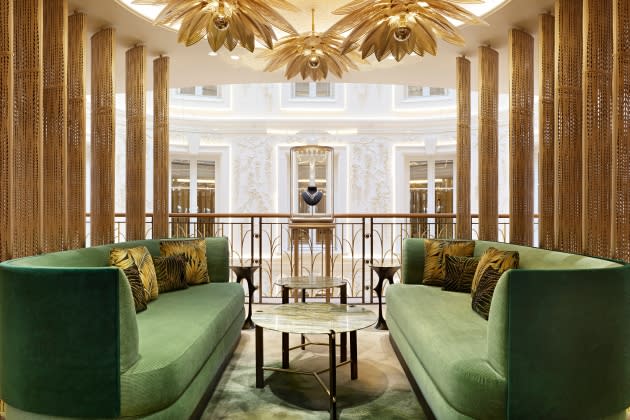
PARIS — To the casual eye there’s nothing amiss on Rue de la Paix, from the view on the Vendôme column and the elegant sandstone buildings to Cartier’s black marble facade.
But this much talked about feature is perhaps the only unchanged element in the jeweler’s historic Parisian home, which opened in 1899 at 13 Rue de la Paix. And even the facade has been offered a fresh livery, with the addition of a vertical plant design by Cartier perfumes designer Mathilde Laurent in collaboration with botanical design specialist Studio Mary Lennox.
More from WWD
“Those who knew the boutique from 2005 until [its closure in 2020] would not recognize it at all,” Cartier chief executive officer Cyrille Vigneron told WWD, expecting a “very big surprise” as the store has entirely been rethought in this major overhaul, which started in June 2020.
Indeed, gone are the columns, Eiffel-style iron features and central staircase of the 2005 renovation, which had sought to take the store to its early 20th-century roots. In their stead are airy spaces flooded with natural light, full of blended references that can’t quite be pinpointed.
The building, totaling 32,300 square feet spread over six levels, includes 10 salons and myriad comfortable nooks and plush crannies for customers to discover the jeweler’s offering more than the 15,000 square feet dedicated to retail.
Also here are the high jewelry workshop and the house archives as well as the Residence, a private space imagined as Cartier’s take on a Parisian apartment, complete with a dining room, large kitchen and winter garden.
The latter is one of many hidden spaces Vigneron expects will draw questions on whether they’re original or new features of the store.
And more than other stores, the three “temples” of Paris’ Rue de la Paix, London’s New Bond Street and New York’s Mansion have “a specific role to connect the past, the present and the future,” added Arnaud Carrez, Cartier’s senior vice president and chief marketing officer, as they are at once the starting point of Cartier’s multigenerational history and “tangible addresses, tangible elements of who we are today.”
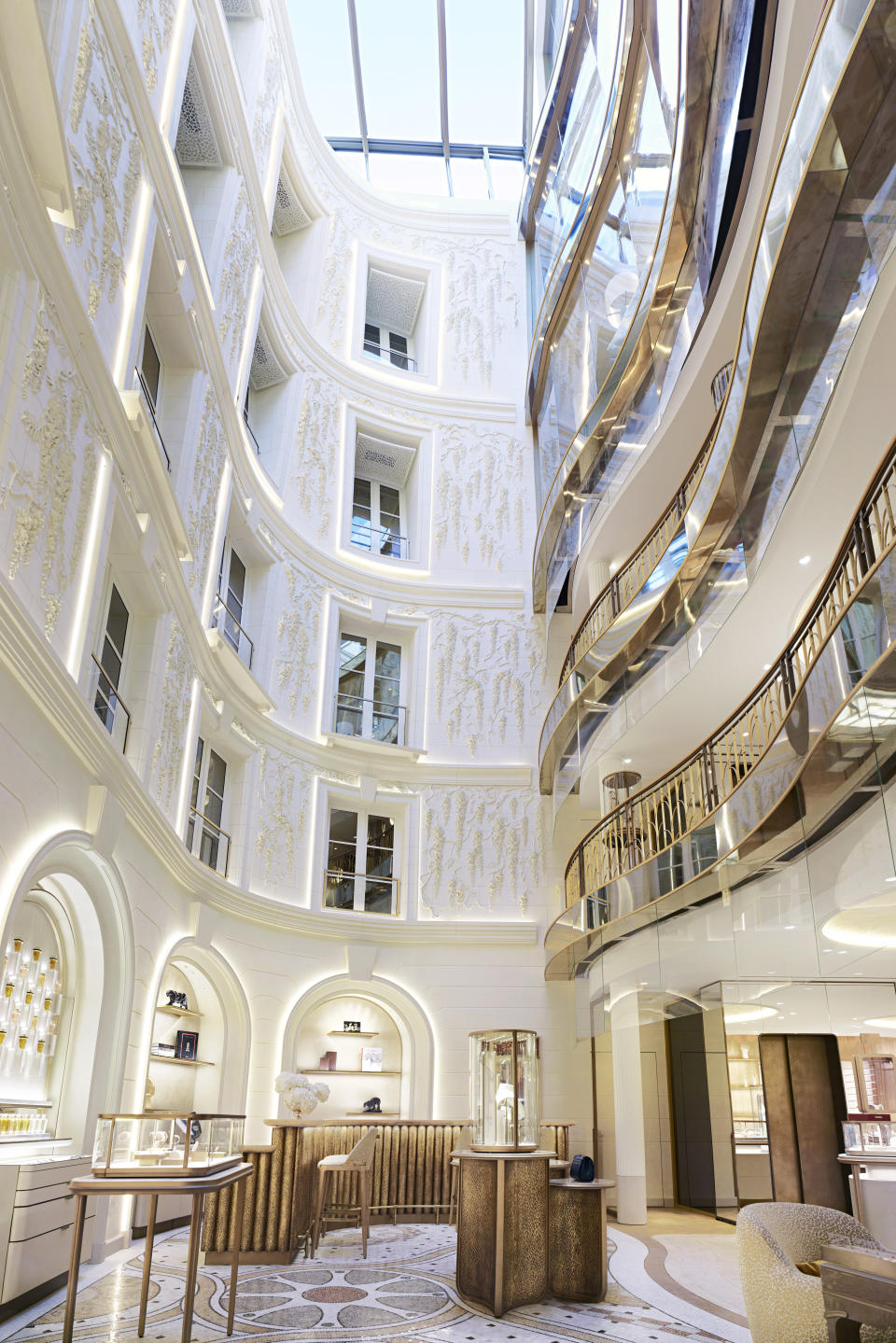
The bedrock of this major overhaul, which continues the work initiated with the 2018 revamp of London’s New Bond Street store and pursued in New York’s recently unveiled Mansion, is the parallel Vigneron draws between Cartier as a brand of “living heritage” and the long, layered histories of the cities around these key stores.
The CEO explained that each city “has more layers than we usually recognize” and that, as such, limiting the renovation to a particular period would be leaving parts of the house heritage out of the frame.
“In some ways, [the renovated flagship] is a global trip in time and space. It respects all the periods without being anchored in any,” continued Vigneron, for whom “timelessness, or eternity, isn’t what ages well, it’s what goes out of time.”
Further cementing this idea of layers is the choice of three Paris-based architect teams, rather than a single signature, for the project.
The journey into the new “13 Paix,” as it is dubbed, starts outside the store, with a kiosk for initial orientation before visitors are handed over to a team of concierges that direct them across the ground floor, home to watches, leather goods and other accessories. It is the first of three floors designed by architectural practice Moinard Bétaille.
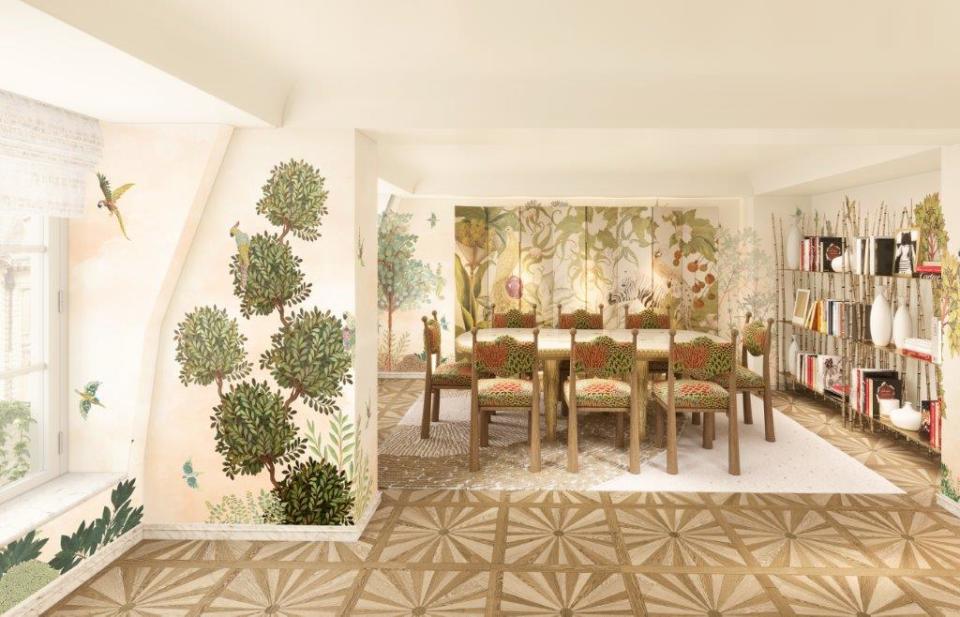
Drawing the eyes toward the back is an entirely new atrium topped with a skylight. It mimics the courtyard of a Parisian building. Its proportions and perspectives have been tweaked so the result would look “typically Parisian but in a way which is a bit theatrical” so visitors understand it has been recreated, said Vigneron.
Mirrored windows overlook this courtyard, imagined by Claire Bétaille and Bruno Moinard, as the axis to the store’s six floors. These are as ornamental as they are functional, participating in the store’s Parisian atmosphere while giving staff in the back office the ability to observe the store’s floors.
On a wood panel in one of the ground floor salons, the words of French artist and writer Jean Cocteau, describing the jeweler as “the subtle magician, who dangles slivers of the moon on a thread of sun,” are inscribed on a lacquered wooden panel. In another, it’s the rare books and archives of Louis Cartier that nod to the man who built the house’s reputed style.
The new main staircase leads to the first floor and the former office of Jeanne Toussaint, the house’s head of design between 1933 and 1970, now turned into an eponymous salon overlooking the Rue de la Paix. It is the central feature of the first floor, otherwise turned over to engagement and wedding jewelry.
High jewelry takes pride of place on the second floor, with salons named and decorated according to influences underpinning the Cartier style, from India to flora. There is also the “Inspiration” salon, dedicated to special orders, which are then made in the in-store ateliers.
The third and fourth floors and a segment of the fifth dedicated to the archives have been designed by Larène Barbier Tardrew and Romain Jourdan, of the Studioparisien agency. Customer service takes place on the third floor in a succession of small salons, while a customization bar offers options like engraving. There’s even a space offering creative activities for children.
One floor higher are the high jewelry atelier and its 18 work benches, bathed in natural light both from the interior skylight and the street outside.
Topping the house are the archives and, in another part, the Residence designed by architectural whiz kid Laura Gonzales, an intimate space where garlands of glass branches eventually connect with the vegetal decor outside, closing the loop.
Throughout the six stories are works by local artisans and masters of arts, like a stone marquetry panel by Hervé Obligi, with its interlaced wave lifted from a 2014 high jewelry bracelet, or a plaster reproduction of a bird soaring that takes after a Toussaint-designed brooch in the house’s archives.
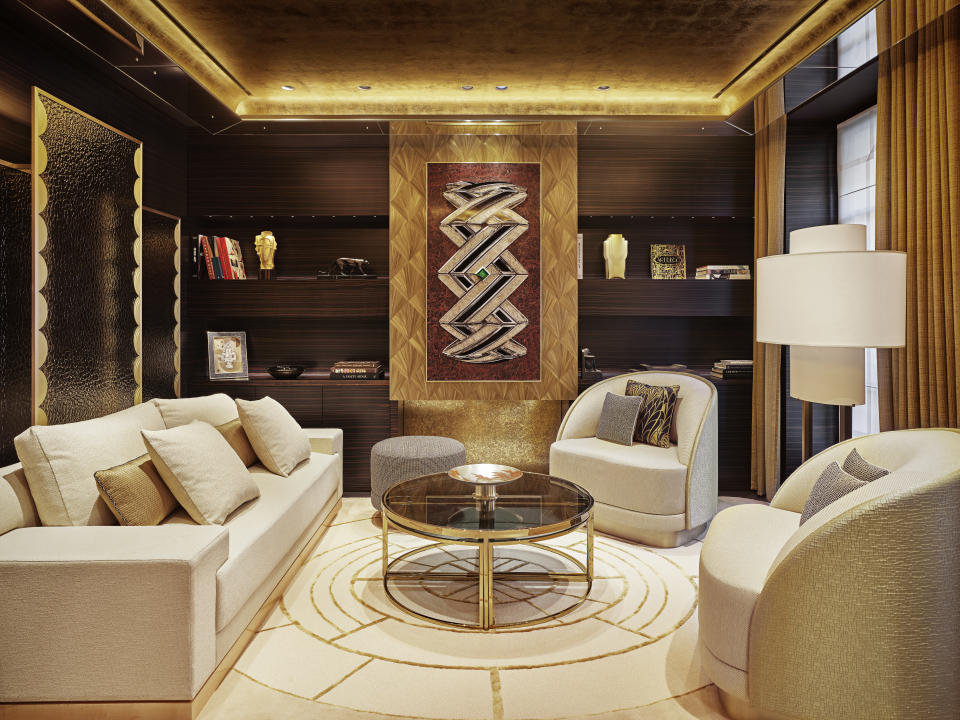
Elsewhere, references become more abstract, like the ground floor’s straw marquetry panel inlaid with glass, a work by Lison de Caune and Jean-Daniel Gary, nodding to Cartier’s spotted panther.
Calling upon the expertise of local talents for his historic flagship is not just a canny choice, it’s part and parcel of Vigneron’s vision of “creativity as a collective endeavor” and a store as an intrinsic part of the urbanism of the city.
Like the many high-visibility projects from luxury houses that have come to completion on Place Vendôme, Avenue Montaigne or the Champs-Elysées, 13 Paix “contributes to making Paris interesting and to keep the interest of customers from around the world [who] come to see it and to shop [in the city],” he noted.
Beyond the renovation of a single store, historic birthplace as it may be, “13 Paix is a part of a big, significant retail transformation that is projecting Cartier in a new dimension,” said Carrez, with stores seen as “a living space — with transactions,” becoming “a place where different communities want to engage” or celebrate personal milestones.
Expect experiences galore at 13 Paix but in Vigneron’s opinion, experiential retail is “not transforming a store into a nightclub.”
Instead, it should be about immersing visitors into the culture of Cartier, offering conversation starters like the many intriguing artisanal works, since “exclusiveness does not go against the spirit of sharing,” Carrez said.
That said, exclusives there will be. In honor of its reopening, 13 Paix will offer two Panther watches, a “Necessaire à Parfum” set as well as three exceptional limited editions of its Tonneau, Tank Asymétrique and Cloche models, reworked to feature the number 13 at 12 o’clock and the word “Paix” (or peace, after the street name) at 1 o’clock.
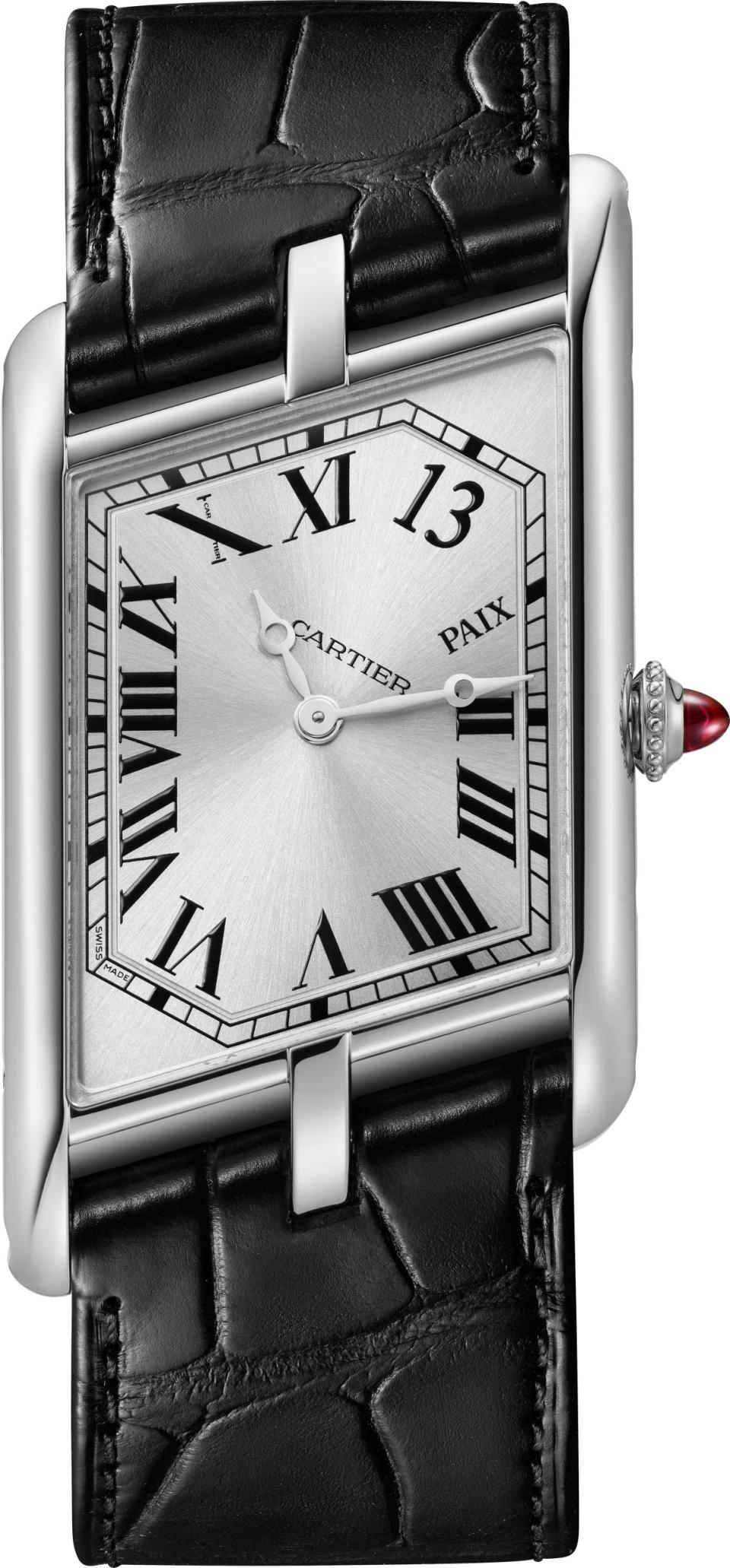
There will also be a selection from its Traditions range, which spans vintage pieces that have been sourced and restored by Cartier’s specialists, only available on a permanent basis from the three historic stores.
They will be among the elements drawing the spotlight toward 13 Paix, although Vigneron was confident it would not be detrimental to footfall and figures in Paris’ seven other Cartier stores, which include one on nearby Place Vendôme, Rue du Faubourg Saint-Honoré and Boulevard des Capucines. Another two outposts are located in the Charles-de-Gaulle airport’s terminals.
Vigneron noted during the pandemic, “the most distinctive [brands] on their image” had come out on top, be it in the primary or secondary market, with Cartier’s Crash watch or the 1983 Cartier “Cheich” honoring the Paris-Dakar automobile rally reaching stratospheric prices at auction.
This appetite for the rare also translated into retail, with Vigneron commenting that places “where efforts are made on decoration” showed more resilience overall.
“The problem is when retailers or brands just think about geomarketing” and placing stores by consumer profile or square footage rather than thinking about a city’s “atmosphere and vibration,” Vigneron said.
He gave the example of the Champs-Élysées store, which he described as having a more “extrovert” feel and more open to the casual browsing generated by the avenue’s 100 million annual visitors, as opposed to the Rue de la Paix’s more neutral setting where “all the luxury and preciousness can be inside.”
Healthy results have certainly been par for the course for 2021 and the first nine months of 2022 across the luxury board.
Cartier’s parent group Compagnie Financière Richemont saw a 44 percent surge in revenue to 19.18 billion euros and operating profit that more than doubled to 3.39 billion euros in the fiscal full year ending March 31, with double-digit gains across the business driven by retail sales and strong demand in the Americas region.
The combined sales of its jewelry brands, which includes Buccellati, Cartier and Van Cleef & Arpels, exceeded 11 billion euros.
With consumers, domestic or international, roaring back in stores whenever restrictions were lifted, he felt “the past two, three years have shown that we have to invest in all cities,” citing the Paris overhaul but also revamps in Geneva, Munich, Milan and most recently, Barcelona.
An extensive renovation of the Champs-Élysées stores is also coming “in a year’s time,” he indicated.
“We are confident that Europe will be very attractive and that stores should not be done with fear, but on the contrary, with confidence,” Vigneron said.

